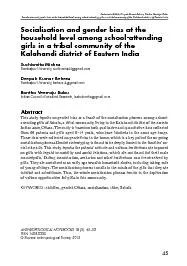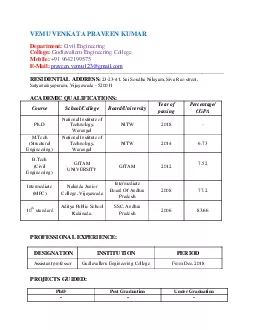PDF-Suchismita Mishra, Deepak Kumar Behera, Bontha Veerraju Babu: ANTHROPO
Author : lois-ondreau | Published Date : 2015-10-27
45 Anthropological Notebooks XVIII2 2012 IntroductionSocialisation is a rational process and its objective is to build gender identity Crespi 2003 Gender socialisation
Presentation Embed Code
Download Presentation
Download Presentation The PPT/PDF document "Suchismita Mishra, Deepak Kumar Behera, ..." is the property of its rightful owner. Permission is granted to download and print the materials on this website for personal, non-commercial use only, and to display it on your personal computer provided you do not modify the materials and that you retain all copyright notices contained in the materials. By downloading content from our website, you accept the terms of this agreement.
Suchismita Mishra, Deepak Kumar Behera, Bontha Veerraju Babu: ANTHROPO: Transcript
Download Rules Of Document
"Suchismita Mishra, Deepak Kumar Behera, Bontha Veerraju Babu: ANTHROPO"The content belongs to its owner. You may download and print it for personal use, without modification, and keep all copyright notices. By downloading, you agree to these terms.
Related Documents














